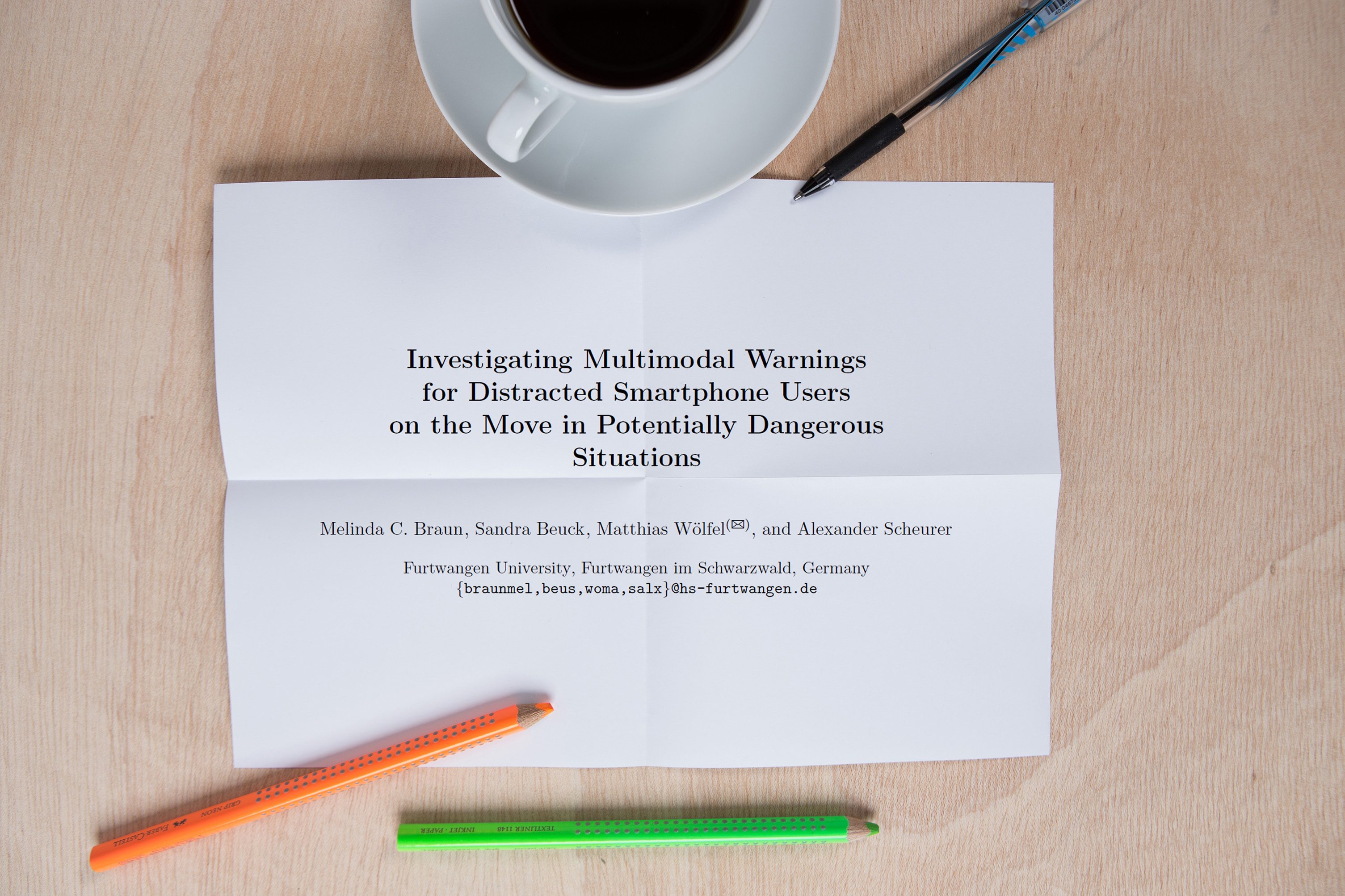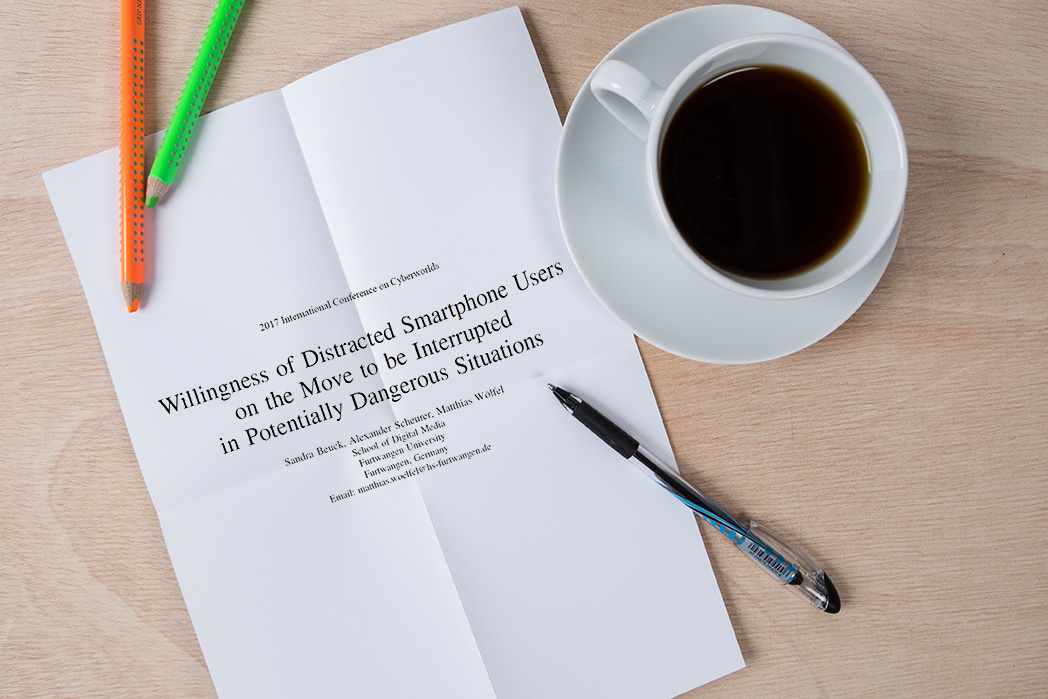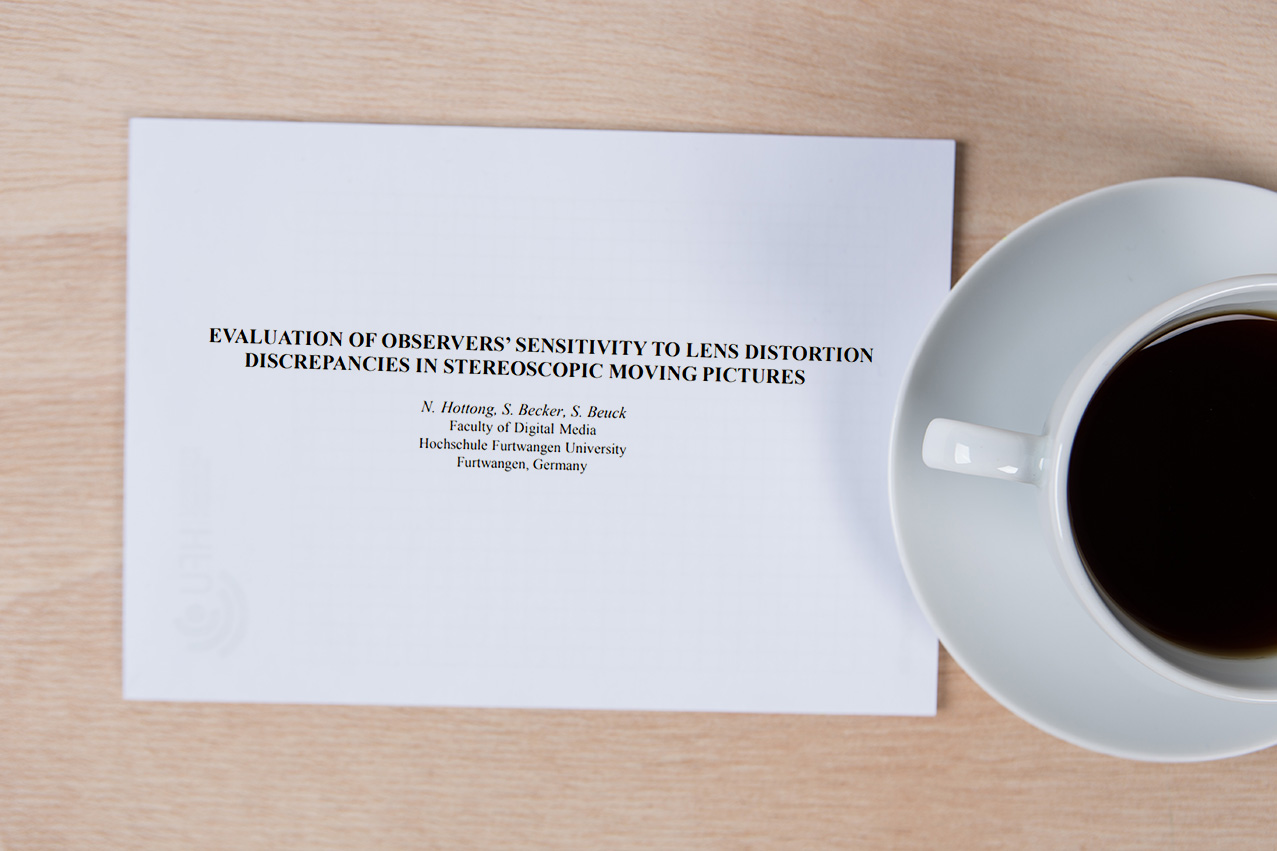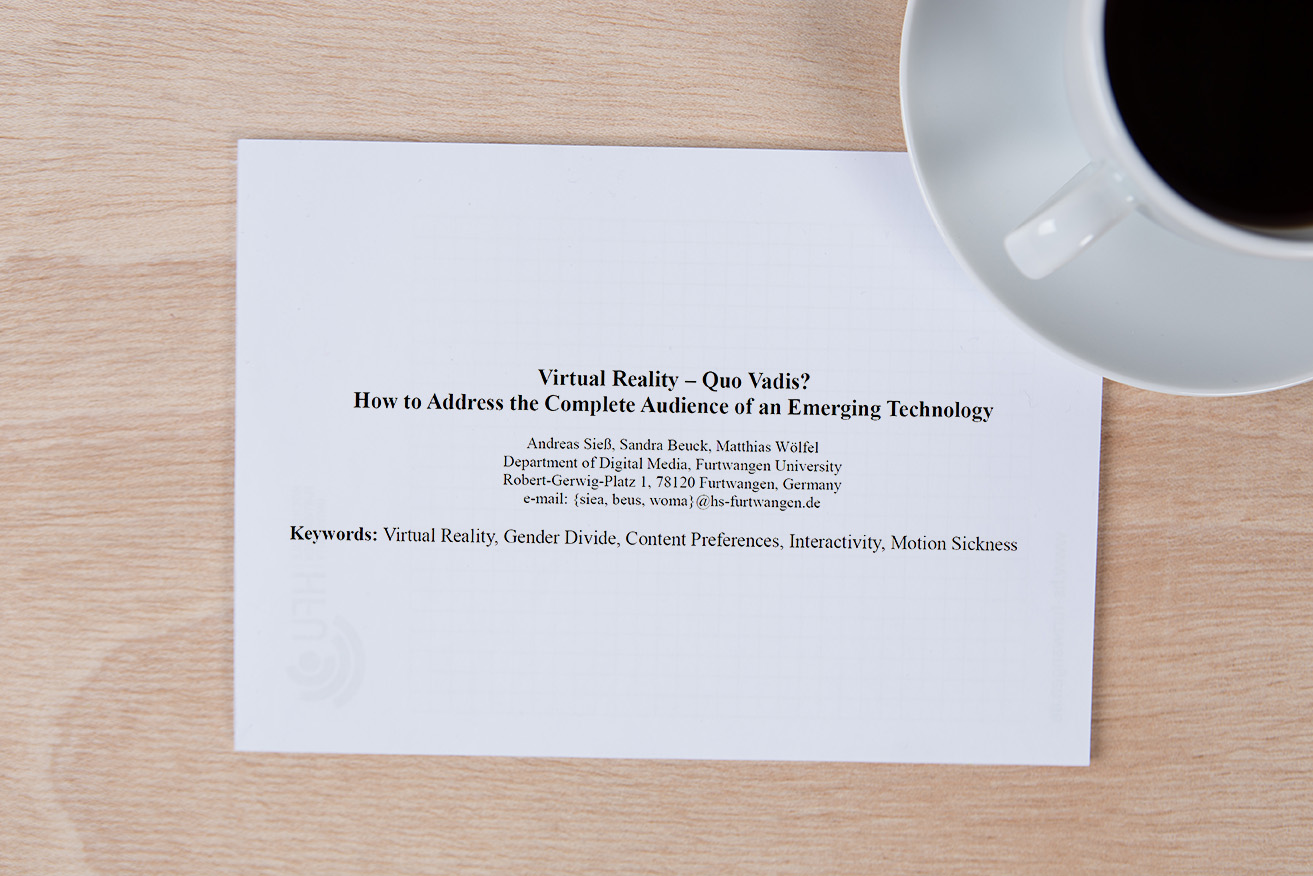Paper
Während und mach meinem Studium habe ich immer wieder die Möglichkeit bekommen, Paper zu schreiben bzw. mitzuschreiben. Aktuell haben wir ein Paper zum Thema „AR-Erweiterungen bei Mobile-Games“ eingereicht, mal schauen ob es genommen wird. Aus meiner Master-Thesis sind zwei Veröffentlichungen entstanden, mit VR- und Stereo-Wahrnehmung befassen sich die anderen beiden Paper.




